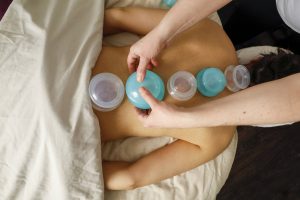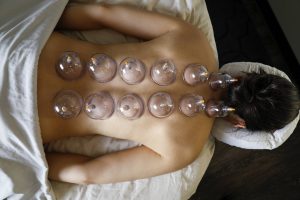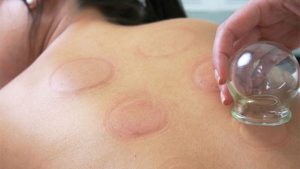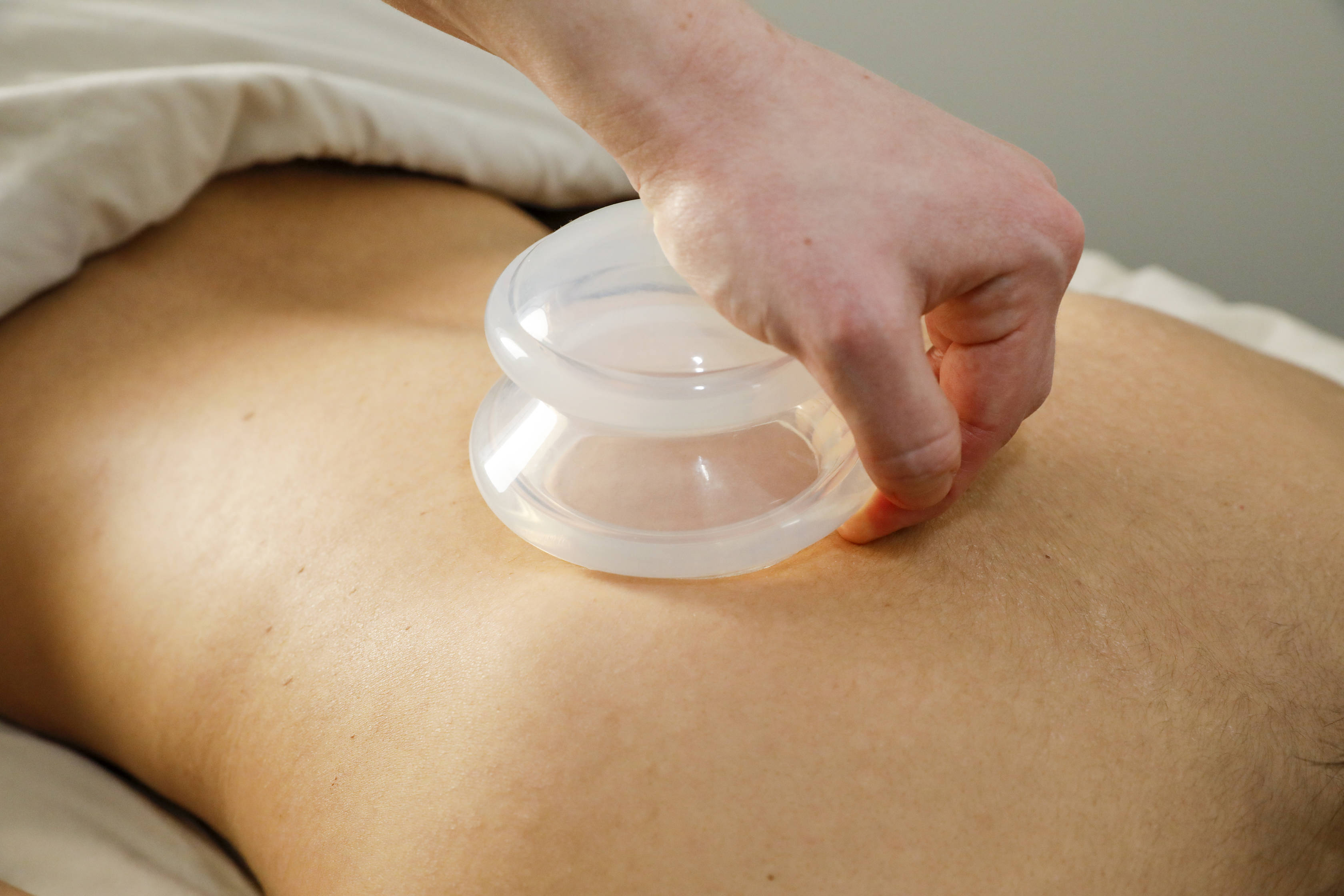Cupping has been used all over the world to treat health conditions for thousands of years. It’s making a comeback here in the States, thanks to prominent athletes and health-conscious celebrities. You may have seen people with red circular marks (not bruises!) from cupping on their shoulders and backs. A lot of people have questions about the benefits of cupping and wonder what it’s like.
At Resolution Health, we use dry cupping to help Madison area professionals, athletes, students, retirees and moms-to-be experience relief from muscle pain, edema, and digestive complaints. (You can book a cupping massage in downtown Madison right here.)
We practice dry cupping using Negative Pressure Massage Cupping. We do this by using smooth cups made of either glass or silicone. Your therapist will place cups on your skin along acupuncture meridian points. Then, your therapist will create a gentle suction that draws your skin upward into the cup. (Your skin is not broken at any time in the process.)
What does cupping feel like? Does it hurt?

The suction will feel tight at first (not painful) while it draws your skin up into the cup. That sensation passes quickly as your therapist moves on to place the next cup. After placing each cup on your back, shoulder, abdomen, etc, your therapist will repeat the suction process. They’ll always check to make sure you’re still comfortable.
Schedule a cupping appointment in downtown Madison with a certified, licensed practitioner.
Book a cupping appointment now
When using glass cups, some therapists use heat (“fire cupping”) to create a vacuum, but we use an apparatus that simply draws out the air out of the cup. You’ll hear it make a small clicking sound as we use the apparatus to create the suction.
Pretty soon, your body will acclimate to the feeling of the cups. You probably won’t even feel every single cup that has been placed. The number of cups your therapist uses will depend on what is being treated. If it’s your first time trying cupping, your therapist will likely use fewer cups for a less intense treatment.

Your therapist will leave the cups in place for 5-20 minutes, depending on your specific need. When it’s time to remove the cups, your therapist will release the pressure from the cup and set it aside. The release of pressure often feels calming, or like your body feels lighter and less tense.
Sometimes, your therapist will apply lotion or oil to your skin and create a lesser pressure so the cups can glide across your skin. This is called “moving cupping.” Moving cupping is often used for treating digestion, inflammation, and congestion. Your therapist will glide the cups toward your lymph glands, as a way of helping your body expel toxins and waste through your lymphatic system.
What do the suction cups do?

While the cups are on your skin, they loosen and lift your connective tissues, which increases blood and lymph flow to your skin and muscles. The targeted blood flow brings oxygen rich blood and lymph to the affected area. Your lymphatic system is responsible for clearing the cellular waste and toxins from your body. Cupping gives your body an extra boost in clearing toxins. You can read about more benefits of cupping in our blog post here.
What about those red marks?

It’s important to understand that the red circular marks left behind by the cups are NOT bruises. They very rarely hurt. Bruises are caused by impact trauma that breaks capillaries in the injured area. But there is NO compression or impact trauma when cupping is done correctly. In fact, cupping does the opposite. Instead of compressing/pushing your skin and muscles, it lifts/pulls your skin and tissues.
The red marks are a result of the blood being pulled into that area. The darker the mark, the more stagnant fluids (toxins, blood and lymph) were dredged up during treatment. The marks last anywhere from a few hours to several days. The more often you receive cupping for the same issue, the lighter the marks will be.
Cupping after-care
Your therapist will give you a more detailed after-care guide at the end of your session. But here’s the general gist:
- Hydrate, hydrate, hydrate! Give your lymphatic system the extra fluids it needs to flush your body of the toxins
- Don’t shower immediately after cupping.
- Keep the areas that were treated covered and warm.
- Avoid alcohol.
- You may feel fatigued or experience flu-like symptoms the next day. This is normal. It’s your body processing and expelling the toxins that were released during your cupping session. Take it easy, get extra rest, and practice good self-care. Your body will thank you!
Curious if cupping could help you? Ask your therapist at your next massage session, or give us a call. Our therapists have been trained and certified in safe and effective cupping techniques. You can choose to have a cupping-only session, or add cupping on to your therapeutic massage.
The benefits of cupping increase over time—consider a monthly membership for added savings and convenience while you enjoy the health benefits of regular massage, cupping, infrared sauna, and acupuncture.
Ready to try it for yourself? You can book a cupping massage here.
Source: http://www.cuppingtherapy.org/pages/faqs.html
(Cupping isn’t for everyone in every situation. Be sure to let your therapist know if you’re pregnant or breast-feeding, if you use blood-thinning medication, have certain skin conditions, or are undergoing cancer treatments.)
